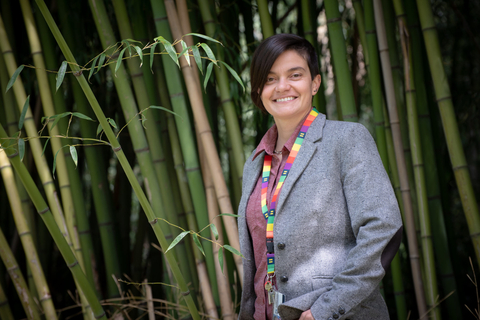COPENHAGEN & PHILADELPHIA– Labster, the world’s leading platform for virtual labs and interactive science, has enhanced student learning outcomes and helped microbiology students at Philadelphia’s Thomas Jefferson University prepare for in-person laboratory experiments.
For a full decade, Labster education technology (EdTech) has provided educators with the ability to digitally explore and enhance their science offerings. Manuela Tripepi, PhD., has conducted a real-world study on how to incorporate Labster simulations into both remote and in-person microbiology semester course curriculum for undergraduate students. Dr. Tripepi is an assistant professor of biology and course director for microbiology in the Department of Biological and Chemical Sciences, College of Life Sciences of Thomas Jefferson University.
The April 2022 issue of the Journal of Microbiology & Biology Education (JMBE) has published Dr, Tripepi’s findings as “Microbiology Laboratory Simulations: From a Last-Minute Resource during the Covid-19 Pandemic to a Valuable Learning Tool to Retain—A Semester Microbiology Laboratory Curriculum That Uses Labster as a Prelaboratory Activity,” (DOI: https://doi.org/10.1128/jmbe.00269-21).
Dr. Tripepi first adopted Labster for her Fall 2020 microbiology course, which she delivered entirely online. The COVID-19 pandemic had led her to research the viability of remote simulation activities — like Labster — to advance experiential learning. Based upon positive feedback from 91 students surveyed across four online lab sections, she then incorporated the simulations into her in-person Fall 2021 curriculum as prelaboratory tools.
“Labster overcame my original skepticism that online lab simulations could prove an acceptable substitute for the in-person experience. I found my students benefited from Labster’s adaptive learning opportunities,” said Dr. Tripepi. “The flexibility of online simulation can help level the playing field for non-traditional students. It allows students to practice their skills in a risk-free setting, providing instant feedback and encouraging them to develop their natural curiosity in conducting realistic experiments.”
Dr. Tripepi credited Thomas Jefferson University with the decision to fund cutting-edge learning technologies. “I would never have had the chance to use Labster if it hadn’t been for the foresight of Gerald Grunwald, Dean of the College of Life Sciences, and Jeffrey Cepull, Vice President for Information Resources, who were willing to invest in a new technology that supports students’ access to science. I’m happy to be part of an institution that experiments with new methods and supports faculty in quantifying learning outcomes. We’re in a unique position to be able to do that here at Thomas Jefferson University.”
Labster currently offers more than 270 STEM curriculum-aligned virtual lab simulations in biology, biochemistry, genetics, biotechnology, chemistry, physics, and more. Labster simulations use gamified techniques and are designed to be not only educational but to connect to entertaining real-world scenarios.
For example, Dr. Tripepi included a PCR simulation set up as a murder mystery that students solved using DNA profiling. During the simulations, students controlled the hands of a scientist with their mouse and went from donning safety equipment to analyzing results. Dr. Tripepi described the flexibility of teaching with online simulations in this session video from the Labster SO: Connected Conference.
“We are awed by forward-looking educators like Dr. Tripepi, whose passion for teaching and commitment to student success inspired her to seek out innovative instruction tools like Labster to conquer pandemic challenges,” said Michael Bodekaer Jensen, co-founder and chief executive officer of Labster. “It’s rewarding to create new and more engaging experiential learning techniques for in-person instruction that result in improved student outcomes.”


